Association of a Toll-like receptor 1 polymorphism with heightened Th1 inflammatory responses and antibiotic-refractory Lyme arthritis
- PMID: 22246581
- PMCID: PMC3338893
- DOI: 10.1002/art.34383
Association of a Toll-like receptor 1 polymorphism with heightened Th1 inflammatory responses and antibiotic-refractory Lyme arthritis
Abstract
Objective: Single-nucleotide polymorphisms (SNPs) that alter immune function, inflammatory responses, and disease susceptibility have been identified in several genes encoding Toll-like receptors (TLRs). The TLR SNPs with the best evidence of an effect on immune function are those in TLR1 (1805GG), TLR2 (2258GA), and TLR5 (1174CT). This study was undertaken to assess the frequency and functional outcomes of these polymorphisms in patients with Lyme disease.
Methods: SNP frequencies and functional outcomes were assessed in 248 patients with Lyme disease. Cytokine and chemokine levels were determined using multiplex assays in the serum of patients with erythema migrans (EM), joint fluid of patients with Lyme arthritis, and supernatants of Borrelia burgdorferi-stimulated peripheral blood mononuclear cells (PBMCs) from patients with Lyme arthritis.
Results: The frequency of the TLR1-1805GG polymorphism was greater in patients with antibiotic-refractory arthritis compared with patients with EM or those with antibiotic-responsive arthritis. Early in the illness, patients with EM carrying 1805GG, primarily those infected with B burgdorferi 16S-23S ribosomal spacer RNA intergenic type 1 (RST1) strains, had higher serum levels of interferon-γ (IFNγ), CXCL9, and CXCL10 and had more severe infection than EM patients carrying the 1805TG/TT polymorphism. These inflammatory responses were amplified in patients with Lyme arthritis, and the highest responses were observed in patients with 1805GG in the antibiotic-refractory group who had been infected with RST1 strains. When PBMCs from patients with Lyme arthritis were stimulated with a B burgdorferi RST1 strain, the 1805GG group had a significantly larger fold increase in the levels of IFNγ, CCL2, CXCL9, and CXCL10 compared to the 1805TG/TT group. In contrast, the TLR2 and TLR5 polymorphisms did not vary in frequency or function among the groups.
Conclusion: The TLR1-1805GG polymorphism in B burgdorferi RST1-infected patients was associated with stronger Th1-like inflammatory responses, an environment that may set the stage for antibiotic-refractory arthritis.
Copyright © 2012 by the American College of Rheumatology.
Conflict of interest statement
Figures
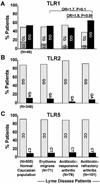
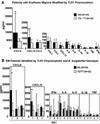
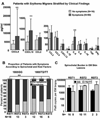
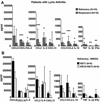
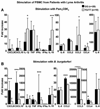
Comment in
-
The Toll of a TLR1 polymorphism in lyme disease: a tale of mice and men.Arthritis Rheum. 2012 May;64(5):1311-5. doi: 10.1002/art.34386. Arthritis Rheum. 2012. PMID: 22246662 No abstract available.
Similar articles
-
Analysis of Borrelia burgdorferi genotypes in patients with Lyme arthritis: High frequency of ribosomal RNA intergenic spacer type 1 strains in antibiotic-refractory arthritis.Arthritis Rheum. 2009 Jul;60(7):2174-82. doi: 10.1002/art.24812. Arthritis Rheum. 2009. PMID: 19565522 Free PMC article.
-
Borrelia burgdorferi RST1 (OspC type A) genotype is associated with greater inflammation and more severe Lyme disease.Am J Pathol. 2011 Jun;178(6):2726-39. doi: 10.1016/j.ajpath.2011.02.018. Am J Pathol. 2011. PMID: 21641395 Free PMC article.
-
High levels of inflammatory chemokines and cytokines in joint fluid and synovial tissue throughout the course of antibiotic-refractory lyme arthritis.Arthritis Rheum. 2007 Apr;56(4):1325-35. doi: 10.1002/art.22441. Arthritis Rheum. 2007. PMID: 17393419
-
Interferon-γ-induced protein 10 in Lyme disease.Clin Ter. 2017 Mar-Apr;168(2):e146-e150. doi: 10.7417/CT.2017.1997. Clin Ter. 2017. PMID: 28383628 Review.
-
Diagnosis and treatment of Lyme arthritis.Infect Dis Clin North Am. 2015 Jun;29(2):269-80. doi: 10.1016/j.idc.2015.02.004. Infect Dis Clin North Am. 2015. PMID: 25999223 Free PMC article. Review.
Cited by
-
Cellular and transcriptome signatures unveiled by single-cell RNA-Seq following ex vivo infection of murine splenocytes with Borrelia burgdorferi.Front Immunol. 2023 Dec 8;14:1296580. doi: 10.3389/fimmu.2023.1296580. eCollection 2023. Front Immunol. 2023. PMID: 38149246 Free PMC article.
-
Borrelia burgdorferi RevA Significantly Affects Pathogenicity and Host Response in the Mouse Model of Lyme Disease.Infect Immun. 2015 Sep;83(9):3675-83. doi: 10.1128/IAI.00530-15. Epub 2015 Jul 6. Infect Immun. 2015. PMID: 26150536 Free PMC article.
-
Borrelia-specific antibody profiles and complement deposition in joint fluid distinguish antibiotic-refractory from -responsive Lyme arthritis.iScience. 2024 Jan 4;27(2):108804. doi: 10.1016/j.isci.2024.108804. eCollection 2024 Feb 16. iScience. 2024. PMID: 38303696 Free PMC article.
-
Whole genome sequencing of Borrelia burgdorferi isolates reveals linked clusters of plasmid-borne accessory genome elements associated with virulence.bioRxiv [Preprint]. 2023 Feb 27:2023.02.26.530159. doi: 10.1101/2023.02.26.530159. bioRxiv. 2023. Update in: PLoS Pathog. 2023 Aug 31;19(8):e1011243. doi: 10.1371/journal.ppat.1011243. PMID: 36909473 Free PMC article. Updated. Preprint.
-
Antibodies to endothelial cell growth factor and obliterative microvascular lesions in the synovium of patients with antibiotic-refractory lyme arthritis.Arthritis Rheumatol. 2014 Aug;66(8):2124-33. doi: 10.1002/art.38618. Arthritis Rheumatol. 2014. PMID: 24623727 Free PMC article.
References
-
- Steere AC. Lyme disease. N Engl J Med. 2001;345:115–125. - PubMed
-
- Steere AC, Schoen RT, Taylor E. The clinical evolution of Lyme arthritis. Ann Intern Med. 1987;107:725–731. - PubMed
-
- Steere AC, Levin RE, Molloy PJ, Kalish RA, Abraham JH, 3rd, Liu NY, et al. Treatment of Lyme arthritis. Arthritis Rheum. 1994;37:878–888. - PubMed
-
- Dattwyler RJ, Halperin JJ, Volkman DJ, Luft BJ. Treatment of late Lyme borreliosis--randomised comparison of ceftriaxone and penicillin. Lancet. 1988;1:1191–1194. - PubMed
-
- Steere AC, Angelis SM. Therapy for Lyme arthritis: strategies for the treatment of antibiotic-refractory arthritis. Arthritis Rheum. 2006;54:3079–3086. - PubMed
Publication types
MeSH terms
Substances
Grants and funding
LinkOut - more resources
Full Text Sources
Other Literature Sources
Medical
Research Materials

